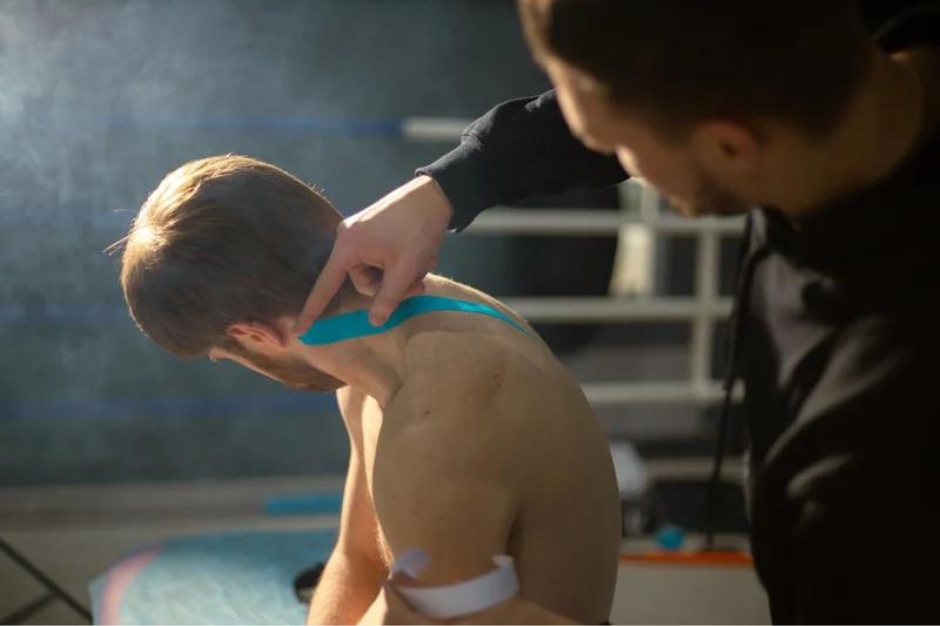Athletic trainers are increasingly using Platelet-Rich Plasma (PRP) in treatment plans for college athletes. PRP, derived from a patient’s own blood, contains growth factors that promote healing in soft tissues, tendons, and ligaments. It is particularly beneficial for treating soft tissue damage, tendinopathies, acute muscle strains, and joint pain, as well as for speeding up the healing of fractures common in college athletics.
Studies have shown that PRP can improve functional outcomes and reduce pain. Research indicates that PRP injections can aid in athletes’ recovery by promoting tissue regeneration and reducing inflammation, leading to a faster return to sports with a reduced risk of re-injury. PRP treatment has also shown to improve mobility and quality of life in patients with knee osteoarthritis, suggesting potential applications for managing joint injuries in athletes.
The increasing use of PRP in sports medicine is driven by its potential to provide a less invasive alternative to surgery with fewer side effects than traditional treatments like corticosteroids, which can have long-term negative impacts on joint health. Incorporating PRP into treatment protocols enables athletic trainers to offer more comprehensive care, addressing both immediate injury recovery and long-term joint health, which is vital for the performance and well-being of college athletes.
Incorporating PRP into treatment protocols enables athletic trainers to offer more comprehensive care, addressing both immediate injury recovery and long-term joint health, which is vital for the performance and well-being of college athletes. Recent studies have demonstrated that PRP can improve functional outcomes and reduce pain. For instance, research shows that PRP injections can aid in athletes’ recovery by promoting tissue regeneration and reducing inflammation, which is crucial for a faster return to sports with a reduced risk of re-injury (Paglia et al., 2020).
Top Reasons Athletic Trainers Use PRP To Treat Injuries:
- Accelerated Healing: PRP promotes faster tissue repair and regeneration, appealing to athletes who need to recover quickly.
- Reduced Pain & Inflammation: PRP injections can help manage pain and prevent further damage while reducing inflammation in injured tissues.
- Improved Recovery from Injuries: By improving the healing of soft tissues, PRP can shorten the recovery period and reduce the likelihood of re-injury.
- Minimally Invasive: Compared to surgical options, PRP therapy is less risky and allows for a quicker return to activity.
- Natural Treatment Option: PRP uses the patient’s blood, making it a natural treatment option with minimal risk of adverse reactions.
- Potential to Avoid Surgery: PRP therapy may help avoid surgery for some injuries, especially when traditional treatments have failed.
- Evidence of Efficacy in Sports Medicine: There is growing evidence that PRP can effectively treat specific sports injuries, encouraging its adoption in athletic training programs.
- Customization of Treatment: PRP therapy can be tailored to the individual athlete’s needs, making it a flexible option for managing various sports injuries.
- Non-Pharmacological Approach: PRP offers a non-pharmacological treatment option that can be used alone or in conjunction with other therapies, reducing the need for medications that may have side effects or be subject to anti-doping regulations.
- Long-Term Benefits: PRP not only helps with immediate pain relief and healing but may also contribute to the long-term health of tissues, potentially reducing the risk of future injuries.
These benefits make PRP an invaluable tool in athletic trainers’ treatment plans when quick and effective recovery is a priority.
References:
Paglia, A., Goderecci, R., Ciprietti, N., Lagorio, M., Necozione, S., & Calvisi, V. (2020). Pain management after total knee arthroplasty: A prospective randomized study. Journal of Clinical Orthopaedics and Trauma. https://doi.org/10.1016/j.jcot.2018.12.005
